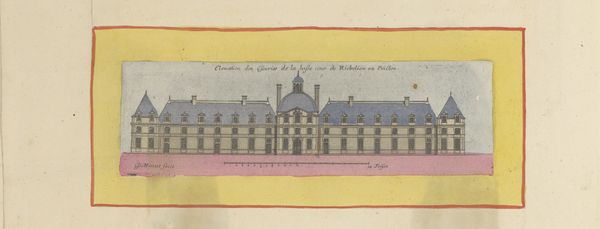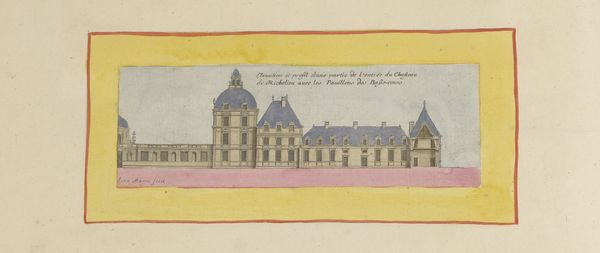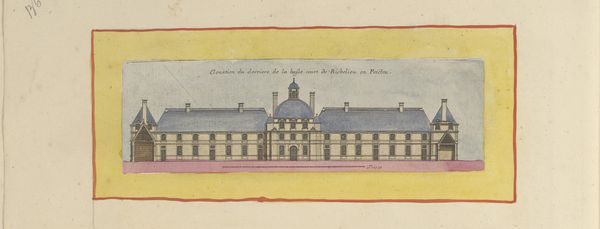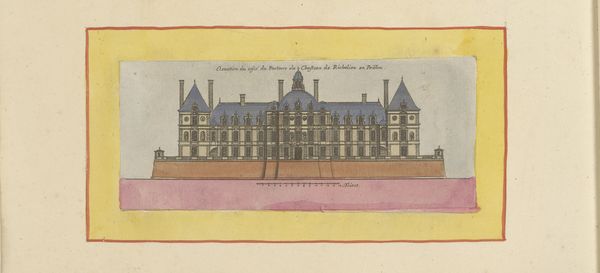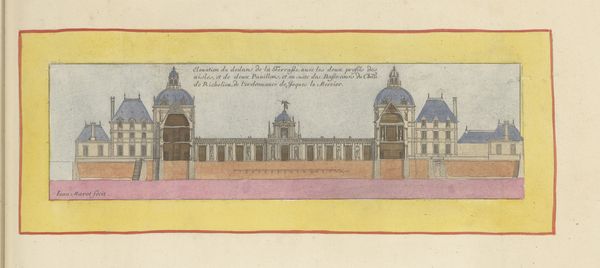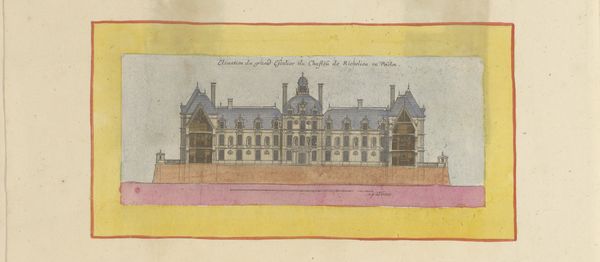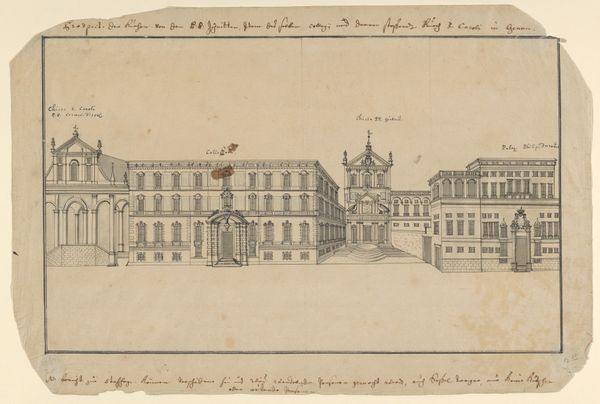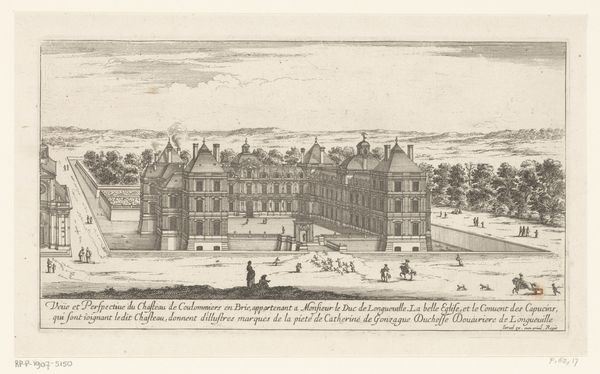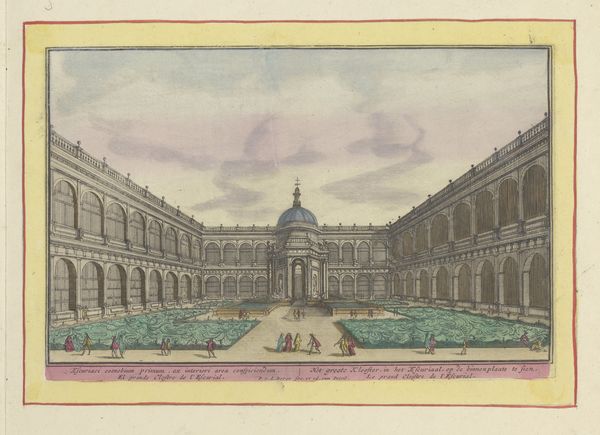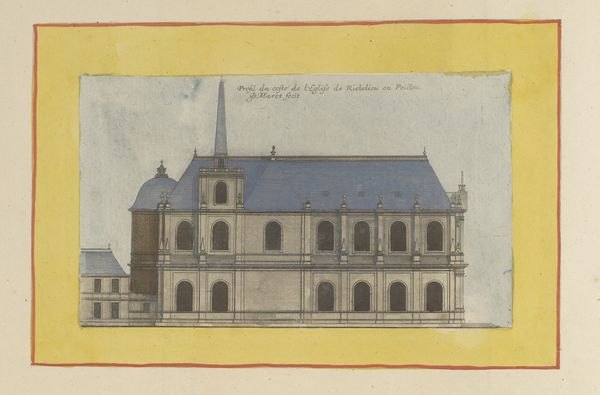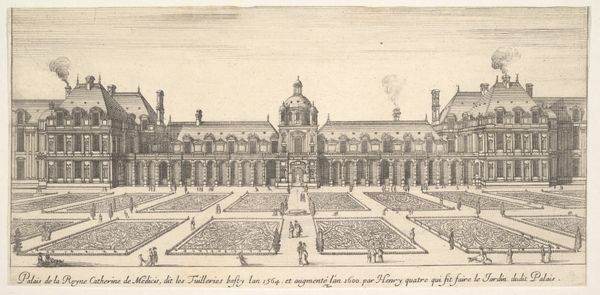
Gezicht op een gevel van het kasteel van Richelieu met doorsnede van het grote trappenhuis 1629 - 1679
0:00
0:00
drawing, watercolor, architecture
#
drawing
#
baroque
#
landscape
#
watercolor
#
watercolour illustration
#
watercolor
#
architecture
Dimensions: height 75 mm, width 240 mm, height 532 mm, width 320 mm
Copyright: Rijks Museum: Open Domain
Jean Marot's ink on paper rendering depicts a façade of the Château de Richelieu. Observe the grand staircase—a motif that embodies power and status in architectural design. Staircases have long been more than just functional elements. Think of the ziggurats of ancient Mesopotamia, where steps led towards the heavens, symbolizing ascent and connection to the divine. In palatial settings, like Richelieu, the staircase serves as a stage for social performance. Consider how the sweeping staircases in Baroque palaces were designed not only to facilitate movement but also to impress, reflecting the owner's dominance and control. This echoes in modern architecture where grand staircases often evoke a sense of ambition and upward mobility. The psychological impact is unmistakable: a powerful tool in shaping perceptions of authority and influence. It’s a visual echo reverberating across centuries.
Comments
No comments
Be the first to comment and join the conversation on the ultimate creative platform.
